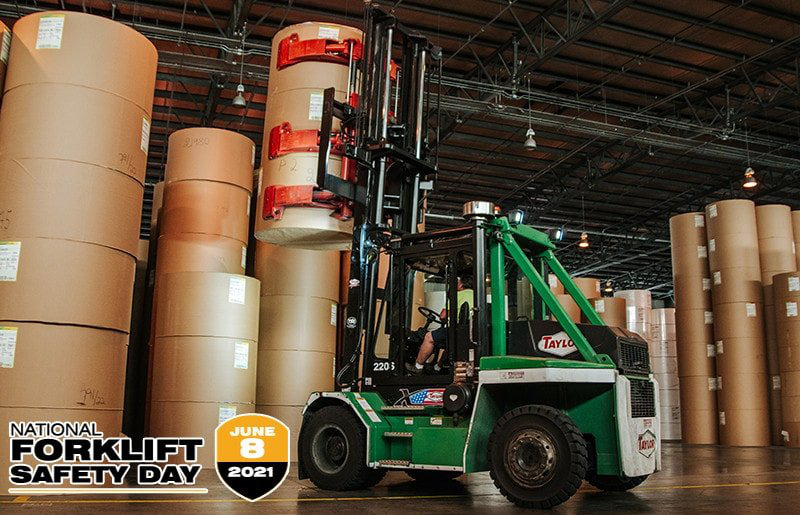
The material handling industry will recognize National Forklift Safety Day on June 8th. Forklift safety is not just something that you should focus on when accidents occur. Safety needs to a consistent and reinforced element of your corporate culture. Safety is not what you do, it must be a part of who you are. Take a look at these common causes of forklift accidents.
- Poorly Trained Drivers: Training is the first step in forklift safety. Not knowing how forklifts work or the proper protocol for carrying loads is an accident waiting to happen. New inventory, obstacles, changes in floor gradient, or nearby pedestrians can all cause problems for inexperienced operators.
FIX: Provide Training. OSHA requires that every forklift operator be trained and certified to operate a forklift, and the operator’s performance be evaluated every three years.
- Speeding: Forklift drivers often become too comfortable and drive irresponsibly. Travelling too fast on a forklift shortens reaction time and leads to accidents.
FIX: Slow Down. Post speed limit signs (OSHA recommends 5 MPH or less) around your facility and make sure drivers know the rules and follow them.
- Operating a forklift with an elevated load: This happens much too often. Driving with an elevated load makes it hard to see, the forklift harder to control, and can cause crashes or the forklift to tip.
FIX: Keep forks low. OSHA regulations encourage drivers to carry loads as near to the ground as possible, approximately 4 inches from the floor.
- Improper Turning: Regardless of load, forklifts can tip. They turn with the rear wheels which causes the rear end to swing outward, increasing chances of tipping during tight turns.
FIX: Slow down for turns. Turning a corner too fast can cause the forklift to tilt. To avoid tipping, slow down before the turn and maintain a gradual speed through the entire rotation.
- Insufficient warnings and markers: Marking forklift zones is paramount to safety, especially where both forklift and foot traffic are present.
FIX: Prevent accidents by warning employees and visitors with ample signs and floor markings. Floor tape and floor signs are the most efficient option for marking forklift zones due to the ease of application and durability. Mark aisles, pedestrian walkways, ledges, traffic flow, and hazard areas.
- Giving rides or riding on the forklift: It may seem harmless but riding anywhere on the forklift that is not a proper seat can be extremely dangerous. It is never a good idea to ride on the forks or use body parts to balance loads.
FIX: Only ride on the forklift in the proper seat. Of course, wear a seatbelt if one is provided.
- Workplace design: Consider the layout of your facility when purchasing a forklift. Make sure the forklift is appropriate for the space in which it will be used.
FIX: Maintain a safe area for forklift operation. If there is minimal aisle space, invest in a narrow-aisle forklift. Maintain a clean work environment, including aisles, docks, doorways, and intersections. Mark areas with wall and floor signs, especially near ramps, aisles, and walkways.
- Load blocks vision: Even when operating a forklift safely and carrying a load as low as possible, vision can often be impaired which may cause accidents with pedestrians and infrastructure.
FIX: Drive Backwards. If you cannot see past the load, drive the forklift backwards.
- Unbalanced or insecure loads: Another major cause of tipping is uneven and insecure loads. Things can go sideways fast when a load is unbalanced.
FIX: When loading the forklift make sure the load is secure and balanced on the forks. For added safety, angle the forks up.
- Forklift mechanical failure: Given the weight of a forklift and its loads, a mechanical failure can cause major accidents and injury.
FIX: Inspect the forklift daily and conduct Planned Maintenance regularly. At the beginning of each shift, follow a forklift inspection checklist to make sure it is in safe working order. Add consistent planned maintenance services to ensure that the mechanical parts are all aligned and operating properly.
A little prevention can go a long way in keeping your employees, your forklifts, and your products safe. The steps you and your team take every day can prevent costly accidents and lost productivity.
Want to know more about forklift safety? Download our NSFD fact sheet and checklist detailing what employers and operators need to know for a safe working environment.
